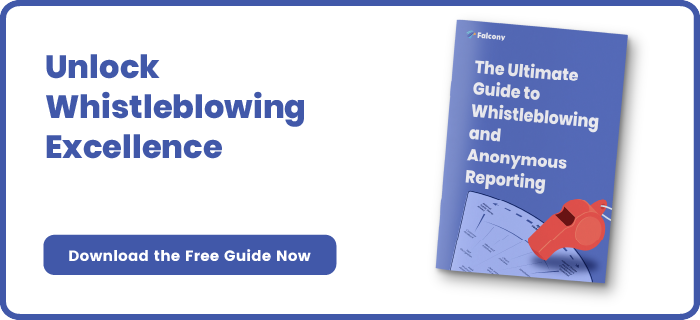Whistleblowing and Internal Audit - Two Sides of the Same Coin
Whistleblowing and internal audit are often viewed as distinct processes with separate objectives. However, upon closer examination, it becomes evident that these two mechanisms share fundamental similarities and complement each other in safeguarding organizational integrity and effectiveness.
In this blog, we delve into the parallels between whistleblowing and internal audit, highlighting how they represent two sides of the same coin.

Approach
Whistleblowing and internal audit differ in their approach to identifying and addressing issues within an organization. Whistleblowing is reactive in nature, triggered by individual employees or stakeholders who observe misconduct or ethical violations and choose to report them. In contrast, internal audit takes a proactive stance, systematically examining processes, controls, and operations to identify potential risks and areas for improvement before they escalate into problems.
Timing
The timing of whistleblowing and internal audit activities also varies significantly. Whistleblowing tends to be irregular and unpredictable, as reports of misconduct may arise at any time based on individual observations or experiences. On the other hand, internal audit follows a periodic schedule, with audits conducted at regular intervals as part of the organization's risk management and compliance efforts.
Format
Whistleblowing and internal audit differ in the format of their observations and findings. Whistleblowing reports are typically free-form and may vary in terms of detail, clarity, and supporting evidence, depending on the individual's knowledge and perspective. In contrast, internal audit reports adhere to standardized formats and methodologies, ensuring consistency and comparability across different audits.
Output
Whistleblowing and internal audit generate different types of output based on their respective processes and objectives. Whistleblowing typically results in a single observation or report of misconduct, which may trigger further investigation or action by the organization's leadership or compliance team. In contrast, internal audit produces multiple observations and findings across various areas of the organization, providing a comprehensive overview of potential risks and control deficiencies.
Mindset
Whistleblowing and internal audit reflect different mindsets towards identifying and addressing issues within an organization. Whistleblowing often involves individuals waking up to an issue or ethical concern and choosing to take action by reporting it to the appropriate authorities. In contrast, internal audit embodies an active mindset, with auditors actively seeking out issues, weaknesses, and areas for improvement as part of their audit mandate.
Stakeholders
Whistleblowing and internal audit involve different stakeholders and participants. Whistleblowing can originate from anyone within or outside the organization who observes misconduct or ethical violations, including employees, customers, suppliers, or members of the public. In contrast, internal audit is conducted by trained professionals within the organization or hired externally, with a specific focus on evaluating controls, processes, and compliance with regulatory requirements.
Typical Cases
Whistleblowing and internal audit often focus on different types of cases or issues within an organization. Whistleblowing reports typically highlight business problems such as fraud, corruption, harassment, or unethical behavior that may not be readily apparent through routine audits or monitoring activities. In contrast, internal audit primarily focuses on ensuring regulatory compliance, assessing financial controls, and identifying operational inefficiencies or risks.
Conclusion
While whistleblowing and internal audit may differ in their approach, timing, format, output, mindset, participants, and focus areas, they share a common goal of promoting transparency, accountability, and integrity within organizations. Together, they form complementary components of a robust corporate governance framework, each contributing unique insights and perspectives to enhance organizational resilience and effectiveness. By recognizing the parallels between whistleblowing and internal audit and leveraging their synergies, organizations can strengthen their risk management practices and cultivate cultures of trust, integrity, and continuous improvement.
If you're looking to implement a mobile tool for whistleblowing, we've got you covered. Falcony | Whistleblowing is easy-to-use, fast to set up, has customisable workflows, vast integration possibilities and more. Contact us for more information.
We are building the world's first operational involvement platform. Our mission is to make the process of finding, sharing, fixing and learning from issues and observations as easy as thinking about them and as rewarding as being remembered for them.
By doing this, we are making work more meaningful for all parties involved.
More information at falcony.io.

Related posts
Insider Tips to Improve Whistleblowing Programs
Whistleblowing programs play a crucial role in promoting transparency, accountability, and ethical...
ESG and whistleblowing - what you need to know
In today's business landscape, Environmental, Social, and Governance (ESG) principles are becoming...
Whistleblowing vs Internal Audit - why you need them both?
Maintaining transparency, accountability, and ethical conduct within an organization is crucial for...





